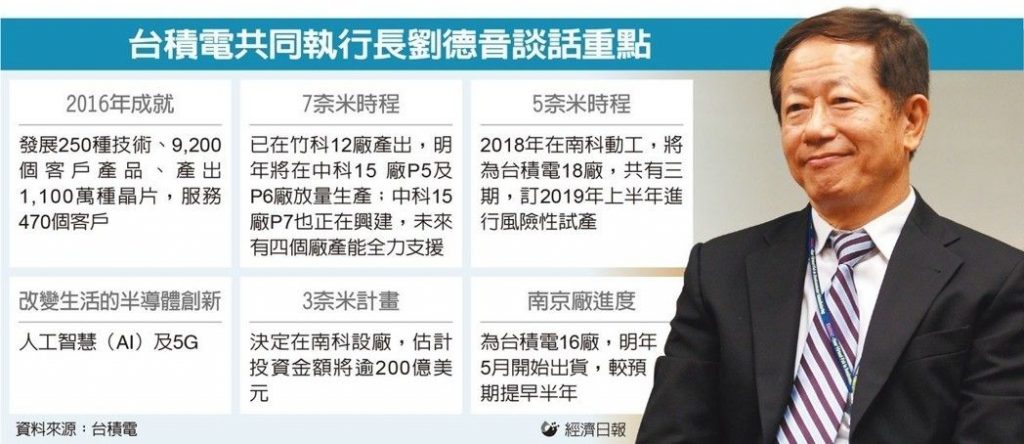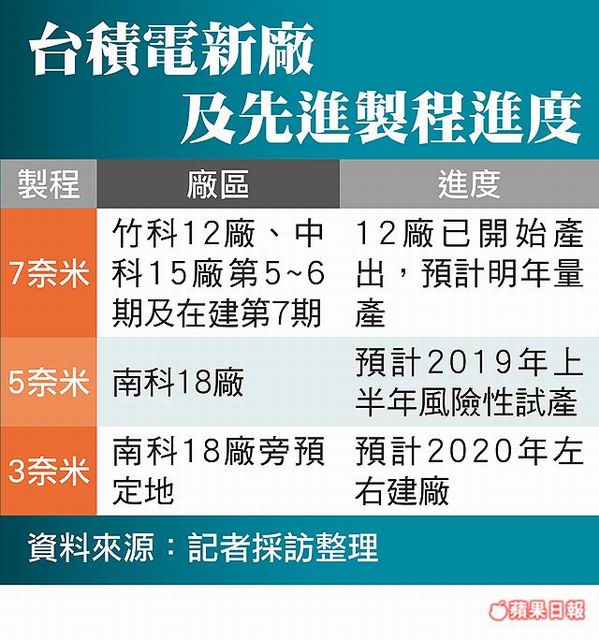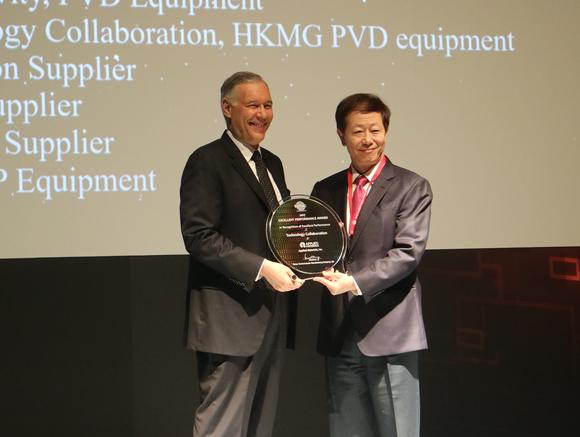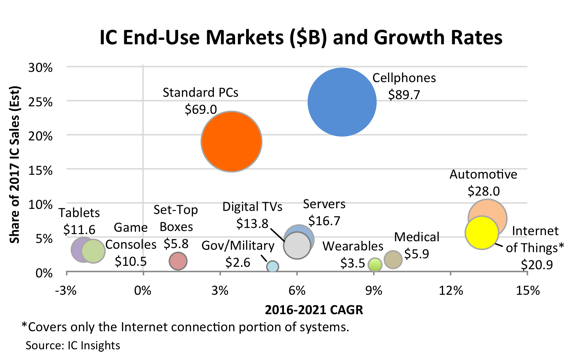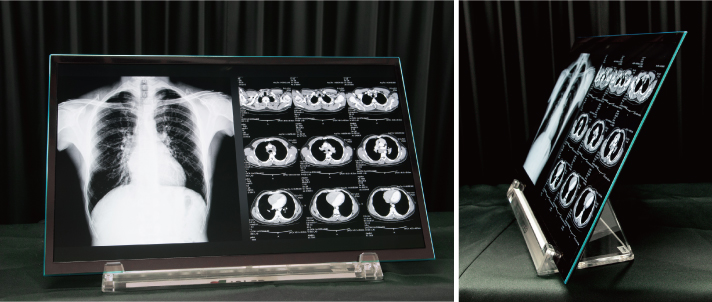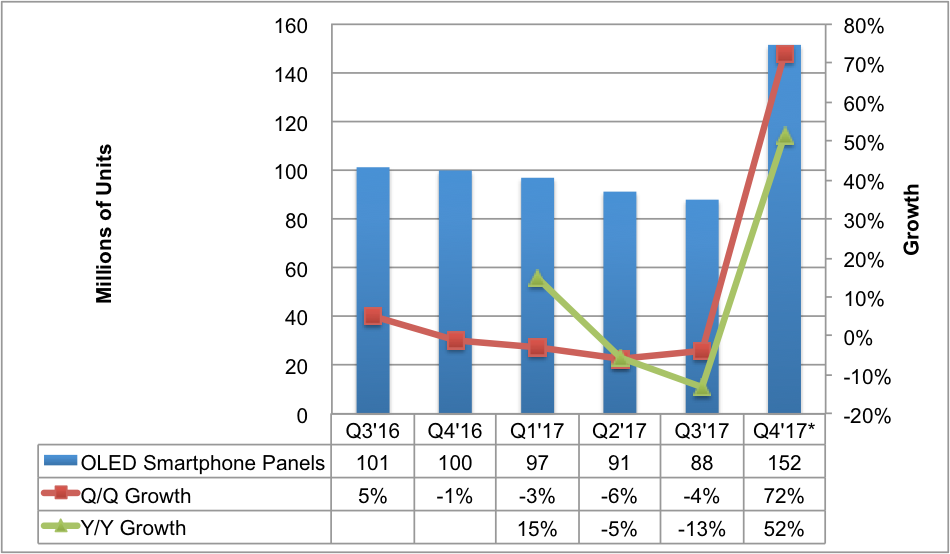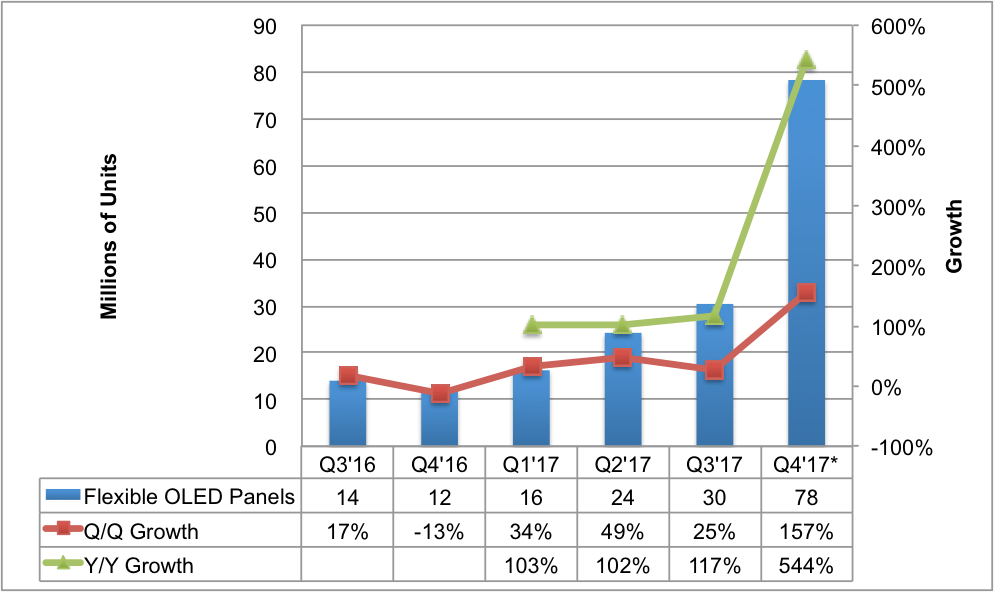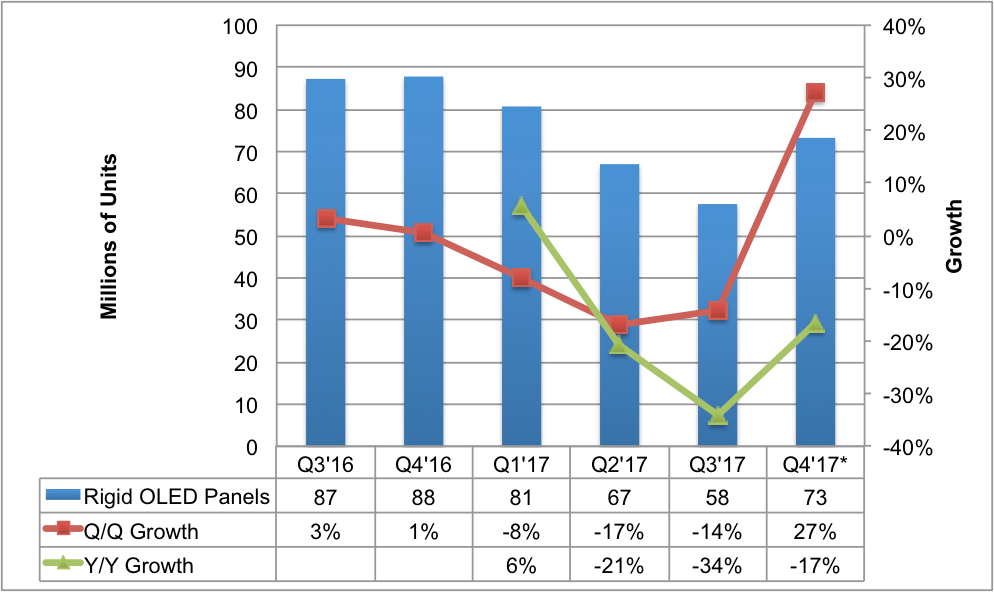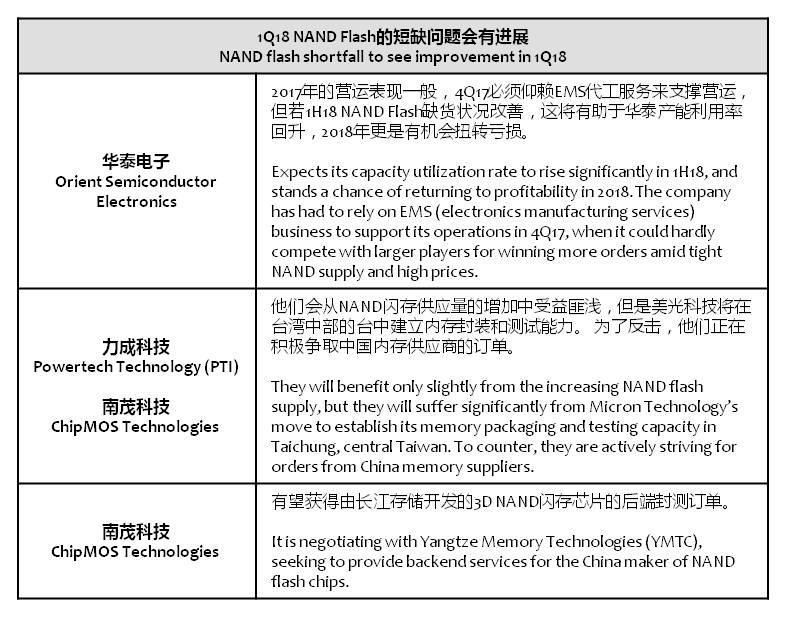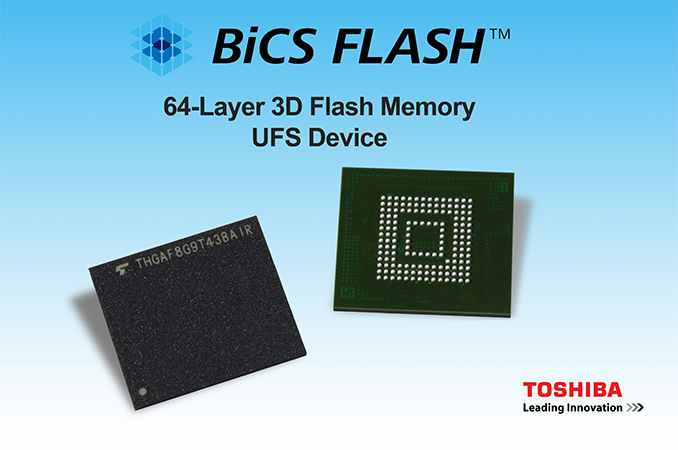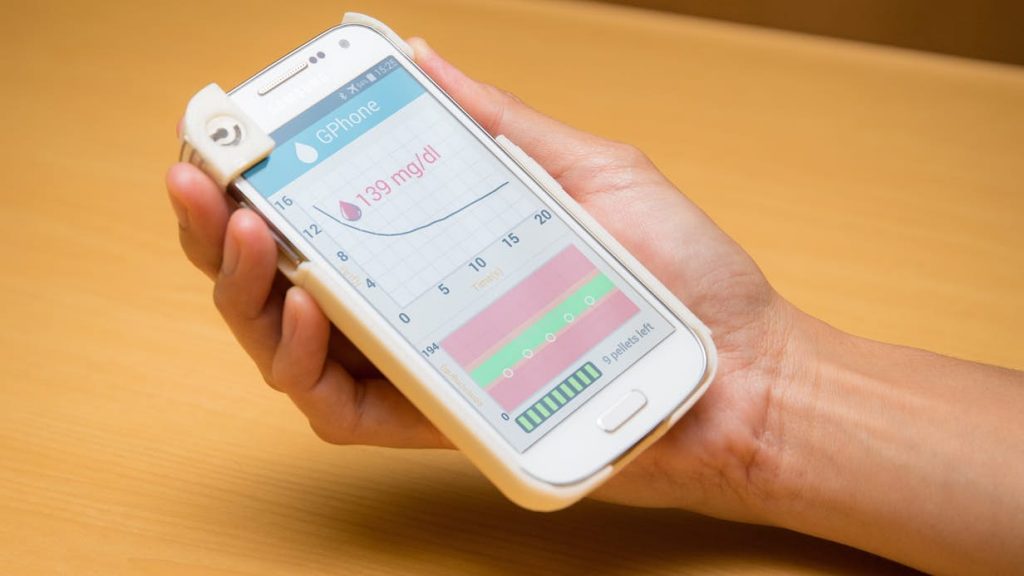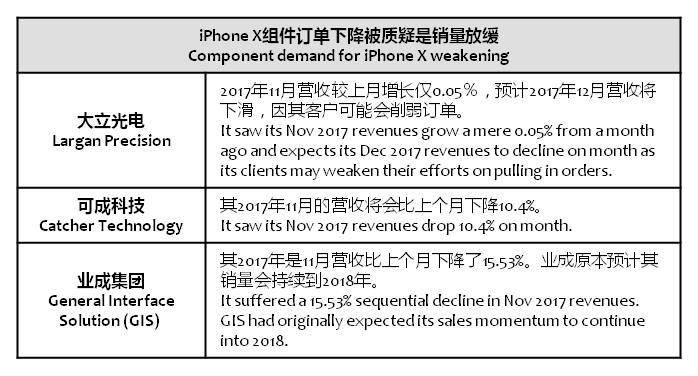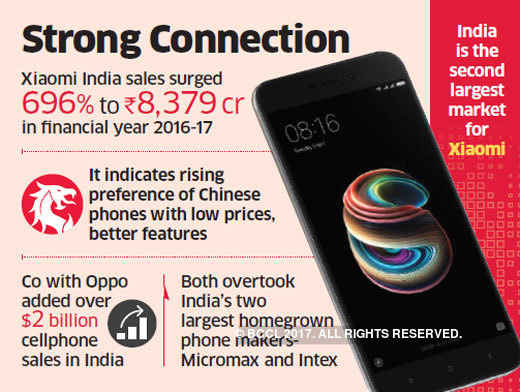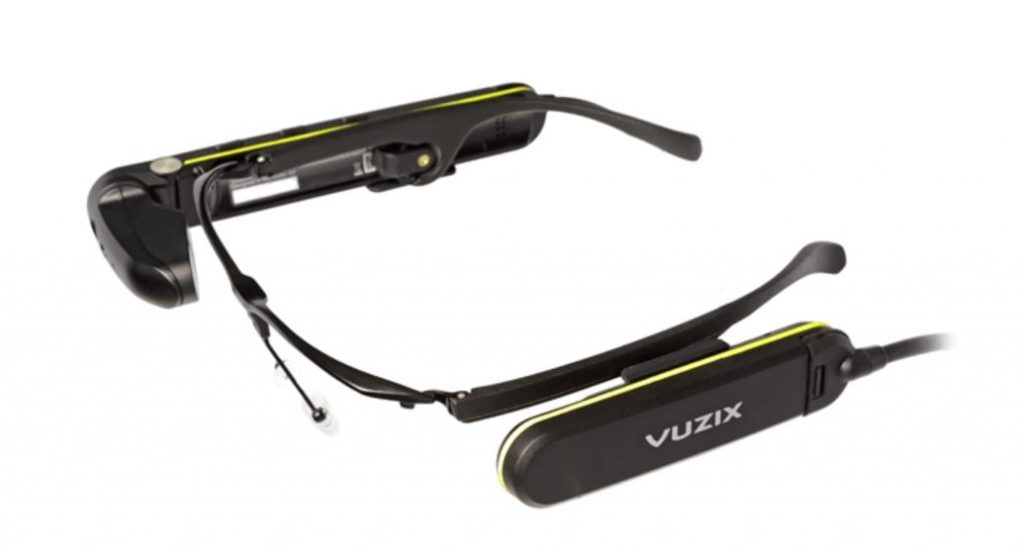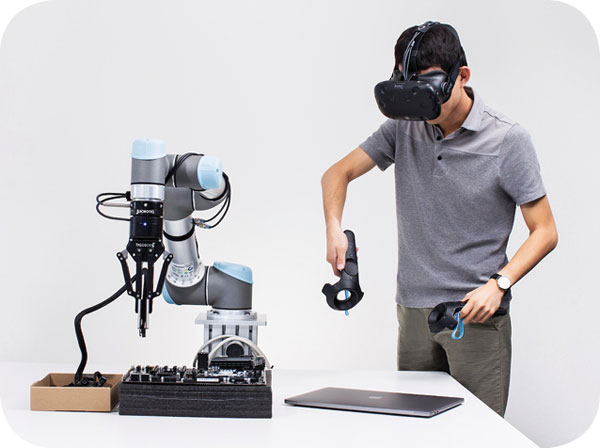
12-09: TSMC will see its 12” wafer fab in Nanjing, China start volume production in May 2018; Xiaomi is drawing plans to boost its offline sales in India; etc.
Chipsets
Taiwan Semiconductor Manufacturing Company (TSMC) will see its 12” wafer fab in Nanjing, China start volume production in May 2018, more than one quarter ahead of its original schedule, to meet strong China market demand, according to company co-CEO Mark Liu. Liu said that the plant will fabricate chips using a 16nm FinFET process technology, and TSMC will set up a design service center in Nanjing to help China customers receive orders. (Digitimes, press, UDN, Money DJ, Apple Daily)
Taiwan Semiconductor Manufacturing (TSMC) is planning to spend more than USD20B to build the world’s most advanced 3nm chip facility in Taiwan in the early 2020s, according to co-chief executive Mark Liu. (Asia Nikkei, Laoyaoba)
Nvidia is rolling out what officials are calling the most powerful GPU for PCs—Nvidia Titan V, with 21.1B transistors and the ability to deliver 110 teraflops of performance, is aimed at scientists and researchers working on high-performance computing tasks such as simulations and artificial intelligence. (The Verge, eWeek, Laoyaoba)
Integrated circuit sales for automotive systems and the Internet of Things are forecast to grow 70% faster than total IC revenues between 2016 and 2021, according to IC Insights. ICs used in automobiles and other vehicles are forecast to generate worldwide sales of USD42.9B in 2021 compared to USD22.9B in 2016. (IC Insights, press, Laoyaoba)
Touch Display
Universal Display (UDC) has announced that it has signed long-term OLED agreements with BOE Technology. Under these agreements, UDC will supply phosphorescent OLED materials to BOE. (OLED-Info, Business Wire, Motley Fool, Madison, Tencent)
JOLED has commercialized the world’s first organic light-emitting diode (OLED) panel produced using the “RGB printing method”, and began product shipment on 5 Dec 2017. The product is a 21.6” 4K high-resolution OLED panel produced using the printing method. (OLED-Info, J-OLED, iFeng, Sina)
DSCC estimates that 88M smartphone OLED displays were shipped in 3Q17, which represents a 4% drop from 2Q17 and a 13% drop from 3Q16 – mostly due to delays in Apple iPhone X shipments. Flexible OLED shipments were up 25% from 2Q17 (30.4M units). Shipments of OLED smartphone are expected to grow significantly in 4Q17, though, to reach 151M units. (OLED-Info, DSCC, press)
Sony and Panasonic are reportedly among the companies set to help an affiliate of Japan Display Inc (JDI) raise JPY100B for mass production of advanced panels. Sumitomo Chemical and Screen Holdings are also likely to take part in the planned fundraising by JOLED, with the four contributors expected to each provide JPY5B~JPY10B. (Japan Times, OLED-Info, EEPW)
Camera
Genius Electronic Optical has begun shipments of 6P (six plastic lens pieces) lens modules for use in rear cameras of smartphones, according to company chairman and president Jones Chen. The company is ready to produce smartphone-use 7P, P+G (glass plus plastic) lens modules, molded glass lens modules, as well as other lens modules for automotive, VR (virtual reality) and AR (augmented reality) applications, Chen said. (Now News, UDN, Digitimes, press)
Memory
Toshiba and business partner Western Digital have reportedly agreed in principle to settle a dispute over the embattled Japanese conglomerate’s plans to sell its USD18B chip unit. (CN Beta, Financial Times, Fortune, Reuters)
TrendForce has pointed out that 1H18 demand for NAND Flash industry weakened, the price has a chance to go down. In 2H18 recovery of demand is increasing and the NAND Flash factory production capacity is recovered steadily, NAND Flash may again be in short supply, the price decline will also stop. It is estimated that NAND Flash ASP in 2018 will decline by 10%~20% from 2017. (HQEW, UDN, CTime, China Times)
The tight supply of NAND flash memory is expected to ease in 1Q18 as the yield rates at major 3D NAND flash suppliers continue improving, which will significantly benefit second-tier memory packaging and testing service providers, according to Digitimes. (Digitimes, press, Laoyaoba, Digitimes)
Toshiba has announced that it has started sample shipments of its latest UFS storage devices based on its 64-layer BICS3 3D TLC NAND memory. The new devices are compliant with the UFS 2.1 specification and can offer very high performance for demanding mobile devices, such as smartphones, tablets, and VR headsets. (AnandTech, Business Wire)
Sensory
Known as the GPhone, created by University of California San Diego, the 3D-printed prototype device fits over a phone, running off of its battery. At one corner of the case is a reusable sensor, connected to a printed circuit board. Additionally, mounted along one side of the case is a removable stylus that is packed with single-use pellets, which it dispenses one at a time. (CN Beta, 3Ders, New Atlas)
Smartphones
YouTube allegedly plans to introduce a paid music service in Mar 2018, a 3rd attempt by parent company Alphabet to catch up with rivals Spotify and Apple. The new service could help appease record-industry executives who have pushed for more revenue from YouTube. Warner Music Group, one of the world’s 3 major record labels, has already signed on. (Android Central, Bloomberg, iFeng)
Apple is reportedly close to acquiring the music recognition app Shazam. First launched in 1999, Shazam has grown significantly over the last several years. Once specifically devoted to music recognition, Shazam now accepts audio and visual clips to identify songs, movies, and television shows. (Digital Trends, Engadget, Bloomberg, CN Beta, TechCrunch)
Despite having enjoyed a surge in orders for Apple iPhone X in Sept / Oct 2017, sources from the upstream component supply chain saw their shipments for iPhone devices weaken in Nov and are likely to drop further in Dec. Apple’s component orders for the iPhone X in November were around 30% lower than its earlier forecast. (GSM Arena, Digitimes, press, CN Beta, iFeng, Sohu)
Xiaomi India Head (Online Sales) Raghu Reddy indicates that Xiaomi is drawing plans to boost its offline sales in India, a key market for the company. Currently, online sales account for 80% of the company’s mobile phone business. (Android Headlines, NDTV, Economic Times, Huanqiu)
Wearables
Vuzix has inked a deal with Toshiba in which Vuzix will supply its custom M300 smart glasses to the Toshiba over a 3-year term. Under the agreement, Vuzix will deliver its augmented reality (AR) smart glasses exclusively to Toshiba for up to 12 months after Toshiba submits purchase orders for the glasses worth at least USD5M. (Android Headlines, Benzinga, Street Insider)
Notebook chassis maker Catcher Technology chairman Allen Horng has revealed that Catcher will start supplying chassis for a brand new product line outside of its existing 3 major categories. Some market watchers believe the new product line could be augmented reality (AR) or virtual reality (VR) devices. (Digitimes, press, CN Beta)
Low-cost VR headsets could be the key to teaching industrial robots how to do more complex jobs in a shorter amount of time says Pieter Abbeel, president and co-founder of the startup Embodied Intelligence. (Laoyaoba, EET Taiwan, EDN China, Quartz, The Verge)
Internet of Things
Ford Motor will begin testing its latest self-driving vehicle technology in 2018 in at least one city but has not changed its plan to begin commercial production until 2021. Jim Farley, president of global markets, said Ford also would test new business models that involve its self-driving vehicles, including the movement of people and goods. (CN Beta, VOA News, Forbes)
E-commerce giant JD.com, the closest rival to Alibaba in China, is broadening its presence in Silicon Valley after it announced a collaboration with accelerator firm Plug and Play to seek out and work with promising U.S. startups. (TechCrunch, Plug and Play, Sohu, Kaixian)
